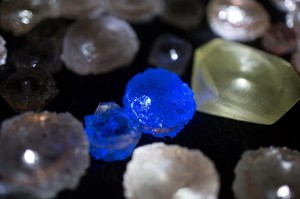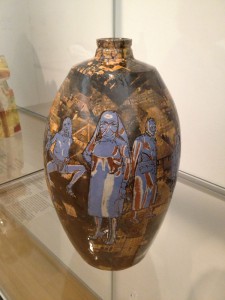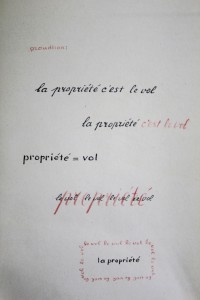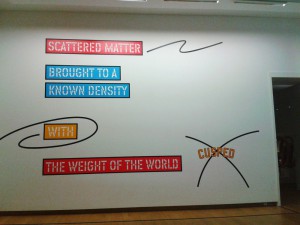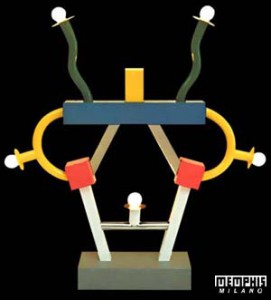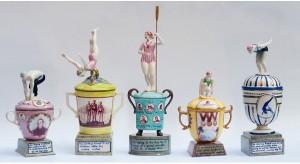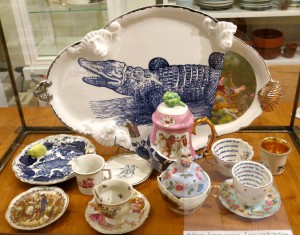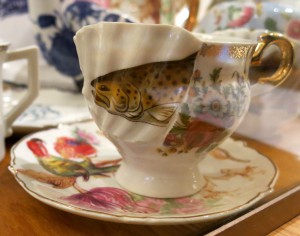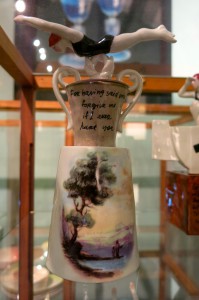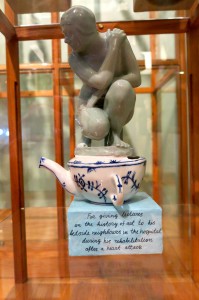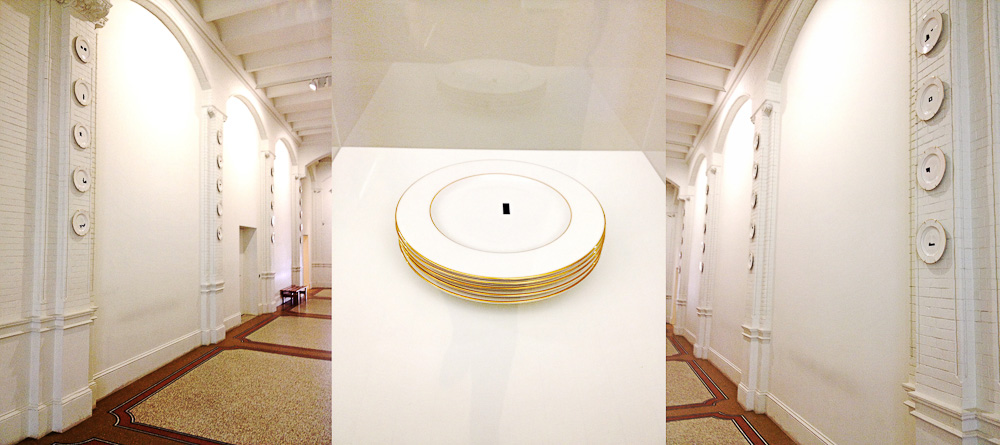
Walking through the high white corridors in the Stedelijk Museum, you notice the colorful museum Posters on the left wall. On the opposite wall, there are four rows of five plates. Because of the white background, they do not pop out, but blend in to the surrounding. Next to a vitrine with a stack of five of the plates inside, a sign explains the artwork and the artist. The black graphical forms on the plates, with a gold-trim, are parts of blueprints. These blueprints are the recent additions to Modern and Contemporary Art Museums around the world.
The work, acquired in 2011, is titled Autotypes. The title stands for the desire to expand and to create, which fits the underlying criticism of the artist John Knight (LA, 1945) and his work. With the by mass-production created set of porcelain plates he creates an opening for a critical discussion of the changing role of the museum. Which includes serving a marketing tool for city branding within the ever-expanding spectacle of mass tourism. Because the plan of the original, historic structure are omitted, the blueprints of the additions are isolated, showing the uniformity of museum architecture.

The moment I looked up at the plates I was intrigued. The gold on the white ceramics looked sophisticated and slightly kitsch, but the black graphic made it modern. Which is just the way I like it, slightly kitsch with a modern touch. Before I read the text about the work, I thought about the forms. ‘What do these forms stand for? Do they tell a story? About a growth? Expansion? Are there any recognizable forms? Is there a specific order?’
So when I read in the information that they are parts of blue prints and that this is part of a debate on the additions to museums now a days, it made me think. I was standing in one of these museums that had expanded. Why did the Stedelijk change? And why did it take so long?
By asking myself these questions, I realized that John Knight had pulled me into the debate. A clever man, that John Knight.
Mysteryman
After seeing this question-raising artwork, I wanted answers. So, what is this debate John Knight is referring to really about, what role does the Stedelijk play in it and WHO is this man I have never heard of? I could not find any images of the man in question, so John Knight’s appearance remains a mystery. I do find out that he has been around in the art circuit for quite some time and that it is not easy to lay a finger on him.
He has been producing art since the late 1960s, early 70s, using existing forms and communication to reconsider the social structures and value systems that support the exchange of ideas and merchandise. He takes the art establishment as his subject of investigation. his practice unpacks conventions and codes that give art its value, using art as a platform to reflect upon larger political and economic systems. Working “in situ,” each project is based on analysis and intervention specific to the venue at hand; its aesthetic logic takes its cues from the structure of that of the gallery, museum, or other exhibition space.
Another stack of plates
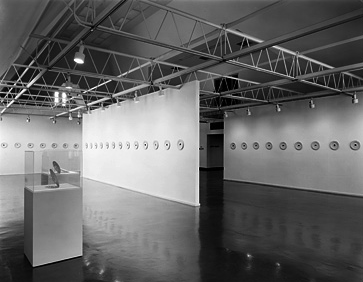 I also discovered that Autotypes is a follow up work from Museotypes from 1983: sixty glazed ceramic plates with gold trim. Like he did with Autotypes, he did not represented the particular museum building by its familiar, literal image. Instead, he ironically chose the abstract configuration of the floor plan that on the plate serves as a ready-made code or symbol. In Museotypes John Knight fuses various visual but specifically non-art traditions in order to questions and revalidate contemporary art. He presents the plates as collectable items and reduces them to commercially available, limited-edition souvenirs. The museums are literally put on display, and as the artist explained, the work as a whole becomes “a representation of the museum and its role in culture”.
I also discovered that Autotypes is a follow up work from Museotypes from 1983: sixty glazed ceramic plates with gold trim. Like he did with Autotypes, he did not represented the particular museum building by its familiar, literal image. Instead, he ironically chose the abstract configuration of the floor plan that on the plate serves as a ready-made code or symbol. In Museotypes John Knight fuses various visual but specifically non-art traditions in order to questions and revalidate contemporary art. He presents the plates as collectable items and reduces them to commercially available, limited-edition souvenirs. The museums are literally put on display, and as the artist explained, the work as a whole becomes “a representation of the museum and its role in culture”.
Bathing in art
In the last several years it has become necessary for museums to expand not simply to house their ever-growing collections, but also to stake their claim in a global tourist trade characterized by spectacle and speculation alike. But, why did the Stedelijk Museum change?

The original Stedelijk Museum was designed by A.W. Weissman in 1895 to house modern art and contemporary art. It was built in a Neo-Renaissance style
but in 2003 firemen made the museum shut down temporarily for a renovation. It lasted until September 2012 to re-open in its full glory. A new all white and glass part was added to the existing building by Benthem Crouwel Architekten. A few major changes were made with the renovation: it had created enough space to house the permanent collection in the main building and temporary exhibitions in the new part. Because of its remarkable appearance, it didn’t take long for the museum wing to get nicknamed the Bathtub. To get back to John Knight, the Stedelijk museum closed, not because of too little space for artwork, nor too little space for the public, but because of safety issues. However, in the end the expansion took care of both.
Put it on a plate
I wanted to do something with the information I had gathered. Firstly, the fact that Autotypes is a work that is visually as interesting as the idea behind it. Secondly, the fact that John Knight chose this medium, ceramics, to make a point. Thirdly, the fact that the work Autotypes is the extended version of Museotypes. And lastly, the fact that the Stedelijk did not really need to expand, but during the time it was closed slowly took part in Knights discussion. That is why I expanded John Knights work with three more plates. On one of the plates I drew the old floor plan of the Stedelijk museum. On another I drew the floor plan of the Stedelijk museums extension from 2012 and on one plate I did my own take: the nickname of the Stedelijk Museum. I think it is a very interesting subject, nicknames. I think in the case of John Knight, it doesn’t get deeper into the discussion. But, I do think it goes deeper in to the subject. Knights discussion talks art and tourists, but it doesn’t say anything on the people of the city where the museum expanded. A nickname would then be a symbolic gesture to the reaction and or emotions of the people living in the area.
But then again, maybe it is just me. I am an ‘Amsterdammer in heart and kidneys’ and when this huge white thing was added to the Museum square, near to where I went to school for six years, I had to process this. Apparently in this research, I started with trying to be a participant in an interesting discussion on museums and their expansions and ended up in ceramic therapy.



